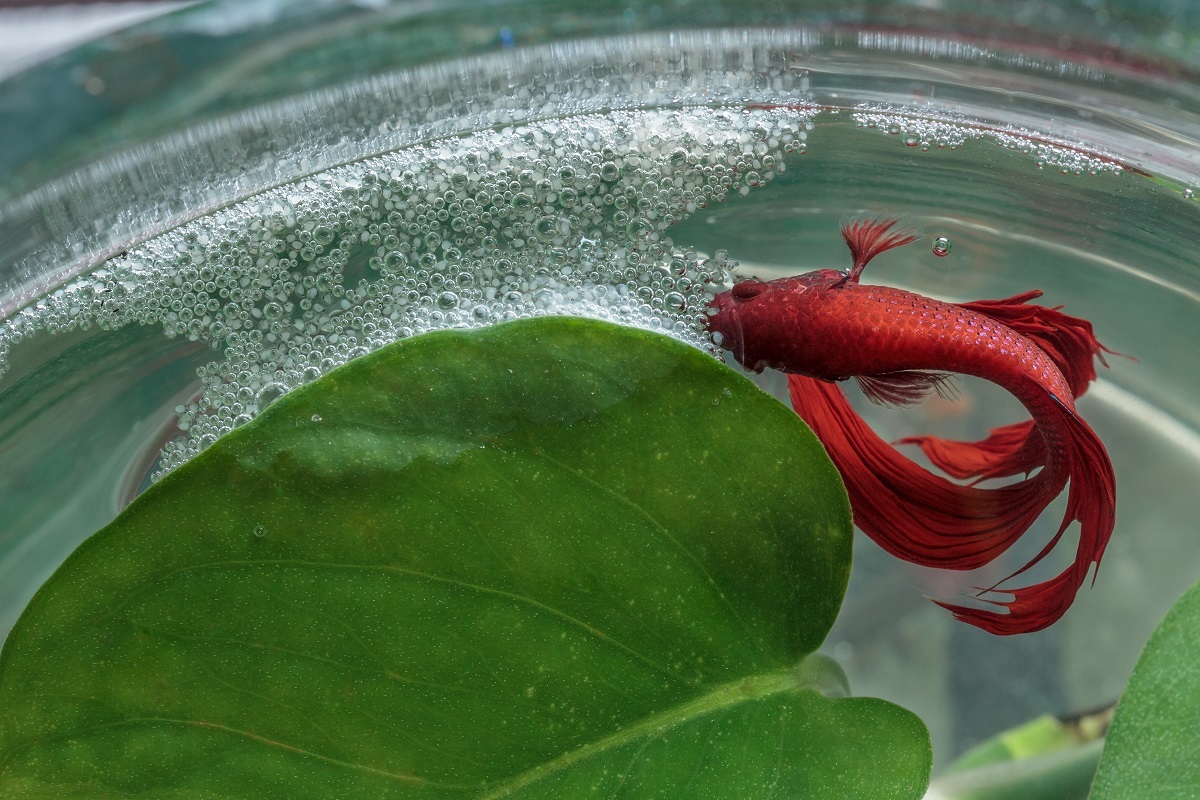As a loving betta fish owner, you likely know the ins and outs of your betta fish’s behavior. So, if you notice they’re suddenly blowing bubbles at the top of their tank, it might get you wondering if they’re okay.
The bottom line is that it’s normal for bettas to build bubble nests at the top of their tank. Although some betta owners like to think their fish do so because they’re happy, the reality is you likely have a male betta that’s feeling ready to mate.
Contents
What Is a Bubble Nest?
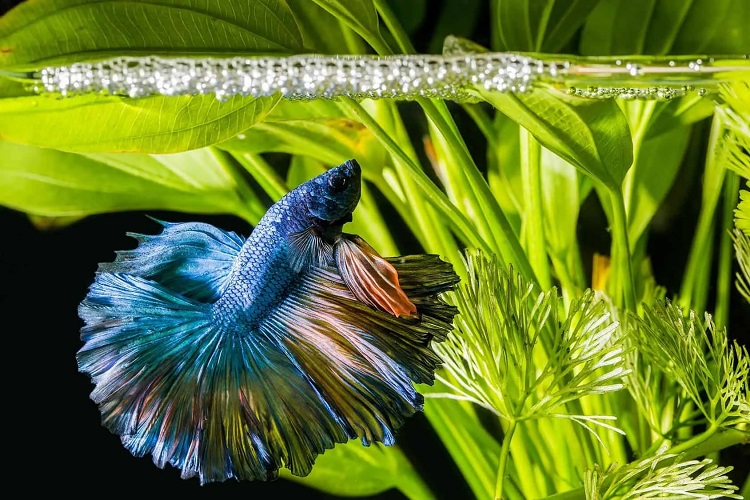
A bubble nest is a series of bubbles that betta fish form at the water’s surface. These bubbles vary in size, shape, and form, with some nests looking like patches of foam and others having a more distinct bubble-like shape with lots of air inside.
Males are the primary builders of bubble nests, using them to prove to a mate that they’re capable of caring for their young. However, you may see a female betta fish pitching in to help if she’s keen on the male.
In the typical scenario where a male hasn’t landed a female after building his nest, he’ll swim beneath it, waiting to meet a female betta who becomes attracted to him and his nest.
After mating, the male usually moves the eggs to the nest and protects them in the upcoming days and sometimes weeks until the baby betta fish swim off to live independently.
What a Bubble Nest Looks Like
Every betta male creates a uniquely shaped and designed bubble nest for their future offspring. Just as no two snowflakes are alike, the same is likely true for betta bubble nests.
Bubble nests all share the characteristic of continuing a series of bubbles that sit side by side. However, they vary in dimension and may contain one or more of the following properties:
- Larger bubbles
- Small, foam-like bubbles
- Thin strand
- A thick layer (up to one inch)
Biologists believe that a betta fish’s age may also impact its bubble nest’s appearance. Furthermore, if other betta fish are nearby, the betta male might try to condense their nest to contain it in a smaller space.
In contrast, if the betta knows they dominate a large territory, they might build a more sprawling nest.
Why Do Betta Fish Build Bubble Nests?
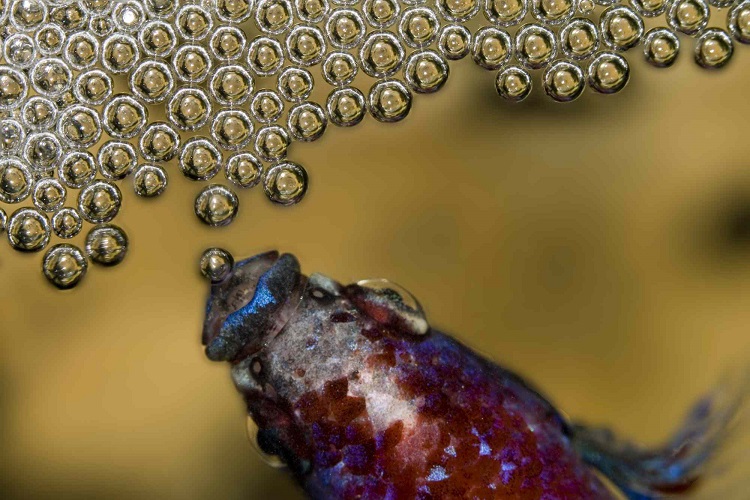
Beta fish build bubble nests when they’re preparing to mate. Males are the primary builders of these nests, as it’s one of their selling points when trying to attract a female betta. Of course, the males’ bright colors are their other tool for trying to attract a partner.
Although bubble nests might look simple to the human eye, male bettas put a lot of time and effort into designing an attractive nest. That said, if there’s a female betta in your tank, she might take an interest in the male and help out.
Bubble nests offer a safe place for the betta eggs and young hatchlings (called fry) to thrive. The bubbles ensure the young have enough oxygen, making it easier for males to protect a set territory from predators.
Another reason your betta fish might be building a bubble nest is that there’s been a sudden change to the water parameters in their tank.
Betta fish are from Thailand, where it’s relatively common to see them building bubble nests when there’s a change in rain patterns, such as when monsoon season hits.
Your betta fish obviously won’t encounter a monsoon in their indoor tank. However, they might build bubble nests in response to a rapid change in temperature.
Some betta owners believe that their bettas build nests because they’re happy. But there doesn’t appear to be scientific evidence supporting this. Instead, bubble nest building seems to boil down to instinct.
Encouraging Bubble Nest Building
If you’d like your male betta fish to build a bubble nest, whether because you intend to pair him with a female or you want to enable him to act upon his instinct, there are things you can do to help the process.
The most important is to place floating plants in your betta’s tank. Betta fish love creating bubble nests beside or beneath natural objects, as they serve as an anchor and help keep their bubble nest safe from predators.
Your male betta fish will become territorial of his bubble nest. Therefore, you should never touch or damage it; the result will be a stressed male betta.
You can and should continue feeding your male betta fish a high-quality diet during this time, such as brine shrimp and bloodworms. They’ll be spending a lot of energy to make and guard their bubble nest, so you want to ensure they’re receiving enough calories.
Plus, ensuring they remain full is extra crucial if you mate them and leave them in their tank to care for the young; male betta fish are notorious for eating their offspring if there isn’t enough other food around for them to eat.
Are Eggs Kept in Betta Bubble Nests?
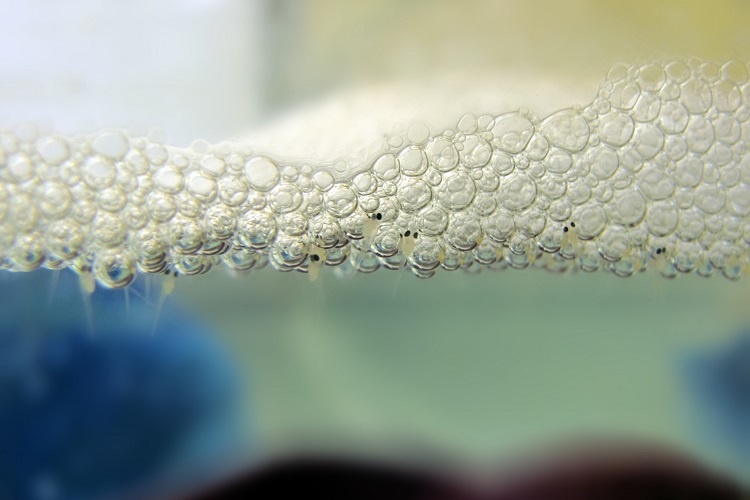
Yes, betta fish keep eggs in their bubble nests. That’s the primary purpose of these nests—to create a safe environment for the eggs and fry to grow.
Contrary to popular belief, many female bettas don’t lay their eggs directly in the nests. Instead, the males scoop up the eggs in their mouths when the females release them. They then carry the eggs into the nest, leaving them to hatch into fry.
That said, this process varies according to the betta species. So, in some cases, betta females park themselves in front of the bubble nest to lay their eggs.
The males stay near the bubble nest during this period to protect it. Meanwhile, the females move off to die or continue living their lives, washing their fins clean of having to defend their young.
How Does Breeding Work With Bubble Nests?
The first step of the breeding process is for males to build a bubble nest at the water’s surface. They’ll choose an area with debris, such as a log or floating plants, and place the bubbles against the objects for added protection.
Female betta fish will be looking for bubble nests during this time, assessing their quality and that of their potential future mate. In rare cases, a female may support the male by helping him build a bubble nest.
As females pass by a male betta and his partial or fully made nest, he’ll begin a complex courtship to try to win over the female. The courtship involves a series of visual and behavioral cues, all with the hope that the female will choose to mate with him.
Once the female selects her preferred male partner and they mate, she’ll begin to lay eggs, typically in open water instead of in the bubble nest. The male is present during this process, often wrapping his body around her to help squeeze out the eggs.
Sadly for the female, this pressure can create so much internal damage that she may die shortly after giving birth.
Once the female releases the eggs, the male will swim around, collecting them in his mouth, where he’ll carry them to the nest.
There, the male will carefully place the eggs in the bubbles, where they’ll have an ideal oxygenated environment to grow. He’ll then monitor the nest until the eggs hatch to prevent the following situations:
- Eggs falling out of the bubble nest
- Protecting against predators
- Thwarting other female bettas wanting to eat the eggs
That’s right—female bettas will eat their own species’ eggs if given a chance. But it’s uncommon for the mother of the eggs to eat them, given the internal damage mentioned above.
If an egg falls out of the bubble nest, the male will rush to grab it and place it back inside with its mouth.
Raising Fry in Bubble Nests

It takes approximately three days for baby betta fry to hatch from their eggs. However, they’re not ready to swim out into the world at this point; doing so would land them in the mouths of hungry fish.
Instead, the fry remains in their nest, enjoying the abundance of oxygen at the top of the water. The male betta fish will continue protecting the nest during this time, although it’s in a fins-off kind of way, given that the fry is responsible for finding their food.
The length of time the fry remains in their nest depends on the species. They can be ready to head off on their own in as little as a few days or as much as a couple of weeks, though such a long time remaining in the bubble nest is uncommon.
Ironically, the fry might have to worry about their father eating them. Such a situation varies according to the betta species and how much other food is available in their environment at the time.
Once the fry flees their nest, the male may or may not start constructing another bubble nest. Whether a male decides to make a bubble nest right away again involves a couple of factors, including:
- Betta’s age
- The season
Generally speaking, the ideal age for male betta fish to breed is four to 12 months old. Once they reach 14 months of age, they risk producing less healthy offspring. In captivity, betta fish can live up to five years. However, they often live no longer than two years in the wild.
Why Are Eggs Kept in Bubble Nests?
Betta fish keep their eggs in a bubble nest for the following reasons:
- It’s rich in oxygen
- Provides a clean environment
- Easier to protect from predators
Adult betta fish are hardy. So, they can withstand living in less than ideal conditions, including shallow, muddy water. Unfortunately, such conditions aren’t suitable for finding high amounts of dissolved oxygen in the water, which baby fry requires.
For this reason, bubble nests provide a safe place for the eggs and fry to get a head start on life in an oxygen-rich environment. Not only do the bubbles contain oxygen, but the fact that they float on the surface of the water also ensures that they’re in an area where the water has the greatest oxygen concentration.
Do Other Fish Make Bubble Nests?
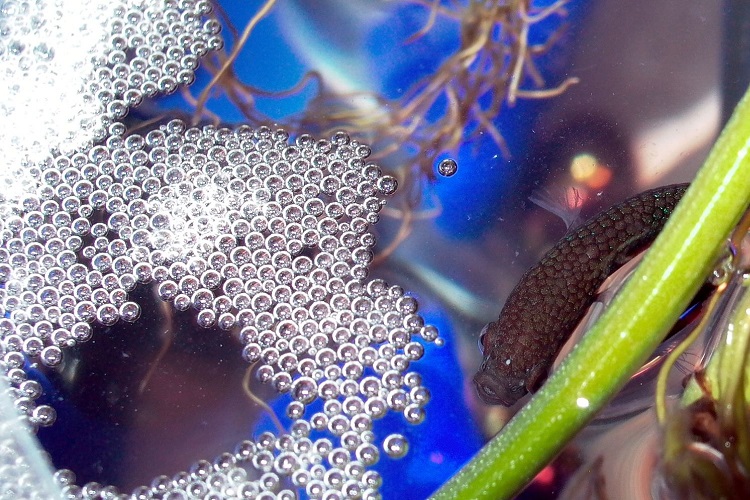
Yes, other fish besides bettas make bubble nests, though there aren’t many of them. Some examples of fish and other aquatic creatures that make bubble nests include:
- Frogs
- Gouramis
- Electric eels
Betta fish have a relationship to the gouramis group of fish, given that they all fall within the Anabantidae family. Some of these fish live in such shallow and muddy conditions that the climbing gourami, for example, crawls on land to search for new water sources.
Fish that create bubble nests are aphrophilus. These fish are part of only a few species within the Anabantidae family that make these nests and share the characteristics of living in shallow, dirty, and stagnant or slow-moving water.
Therefore, they share the purpose of making bubble nests for helping to give their eggs and fry increased levels of oxygen until the fry grows strong enough to tolerate lower dissolved oxygen concentrations in their surrounding environment.
Conclusion
If you notice your betta fish making a bubble nest in their tank, there’s no need to worry. Bubble nest making is normal for males, as it means they’re ready to mate.
Although it’s less common for females to make bubble nests, you might notice your female betta making one. That’s okay too.
Should your goal be to mate your betta, placing a few female bettas in a large tank with a male betta who is busy making a bubble nest is an ideal time. Once mating occurs, there’s no need to leave the females in the tank, as it’ll only stress out the male.
So, move them into a separate tank and let your male live out his instincts of protecting them from the predators you know he won’t encounter. Alternatively, you can remove your male from the tank, too, given that he might choose to eat some of the fry.

Ian Sterling, founder of Fishlab.com, began his aquarium journey over 30 years ago, driven by a deep fascination for fish and their diverse personalities. His website, Fishlab.com, is dedicated to making fishkeeping accessible and enjoyable, offering beginner-friendly guidance, expert insights, and a community for aquarists to connect and share experiences.


